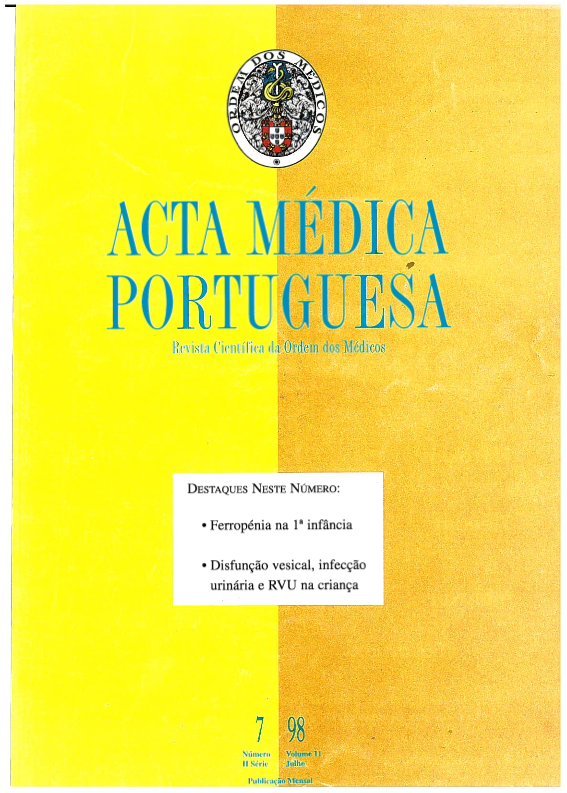Prevalence of iron deficiency in early infancy.
DOI:
https://doi.org/10.20344/amp.2310Abstract
In order to determine the prevalence of iron deficiency among 6-to-24 month-old children in the Cascais county, a cross-sectional study with systematic opportunist sampling of all 6-to-24-month-old children seen for routine immunization or well-child health care at the Public Health Centers in the Cascais county, during the Spring of 1994. All children were submitted to a short nutritional and clinical inquiry. Blood samples to evaluate anemia and iron deficiency were obtained from eligible children after parental consent. Of the 183 children who visited the health centers during the enrollment period, 125 were eligible for blood sampling. Adequate blood samples were obtained from 120; 38 (31.7%) fulfilled the eligibility criteria for the therapeutical trial (polymaltose-ferric hydroxide, 5 mg/kg/day, for 4 weeks). Twenty-six completed the trial and 13 (50%) had a positive response. The prevalence of iron deficiency estimated for this population sample was 15.8% (CI95% = 8.8-22.3), twice the prevalence of iron deficient anemia, presenting only as mild anemia. Nevertheless, for a total population of 3,500 6-24 month old children in the Cascais area, a 15% prevalence means over 500 iron-deficient children (estimated range between 300 and 800) of which 250 are likely to suffer anemia (150-400) and may be at risk of developing a permanent intellectual deficit. The size of the problem as sampled in the Cascais area does not justify recommending the screening of all young children; instead it points to the need to pay special attention to nutritional education in well-child health care visits, and to allow the early detection and treatment of infants with iron deficiency or at risk of becoming iron deficient.Downloads
Downloads
How to Cite
Issue
Section
License
All the articles published in the AMP are open access and comply with the requirements of funding agencies or academic institutions. The AMP is governed by the terms of the Creative Commons ‘Attribution – Non-Commercial Use - (CC-BY-NC)’ license, regarding the use by third parties.
It is the author’s responsibility to obtain approval for the reproduction of figures, tables, etc. from other publications.
Upon acceptance of an article for publication, the authors will be asked to complete the ICMJE “Copyright Liability and Copyright Sharing Statement “(http://www.actamedicaportuguesa.com/info/AMP-NormasPublicacao.pdf) and the “Declaration of Potential Conflicts of Interest” (http:// www.icmje.org/conflicts-of-interest). An e-mail will be sent to the corresponding author to acknowledge receipt of the manuscript.
After publication, the authors are authorised to make their articles available in repositories of their institutions of origin, as long as they always mention where they were published and according to the Creative Commons license.









